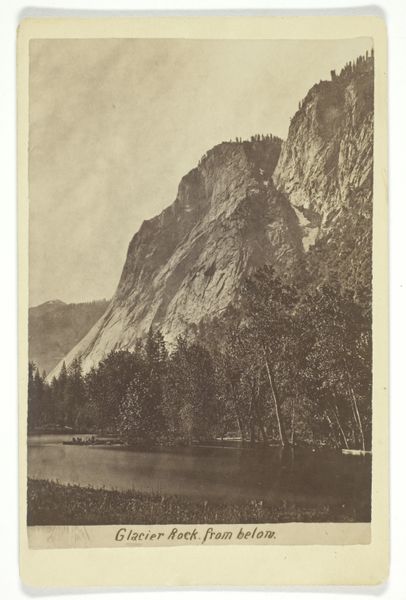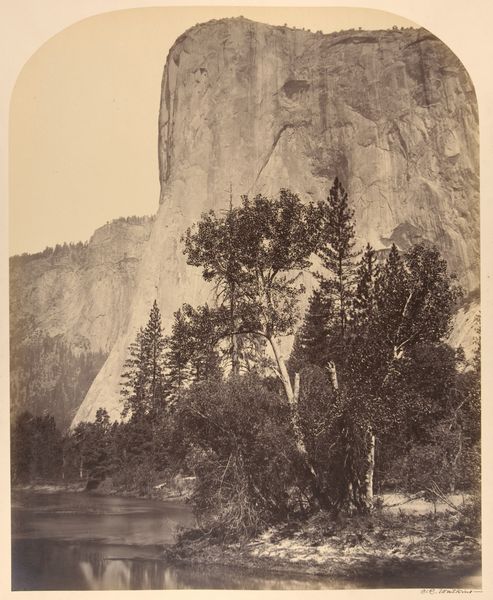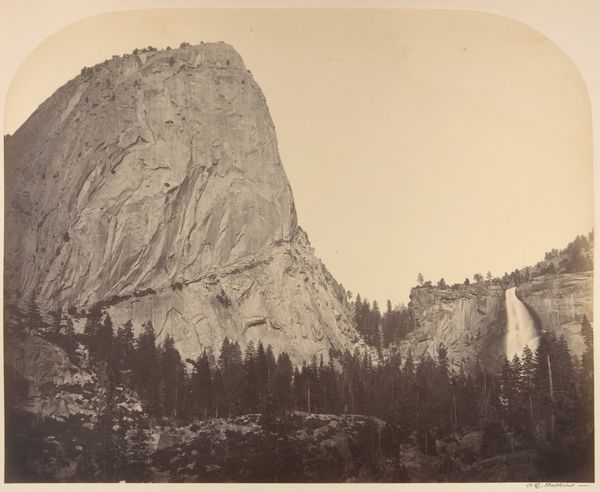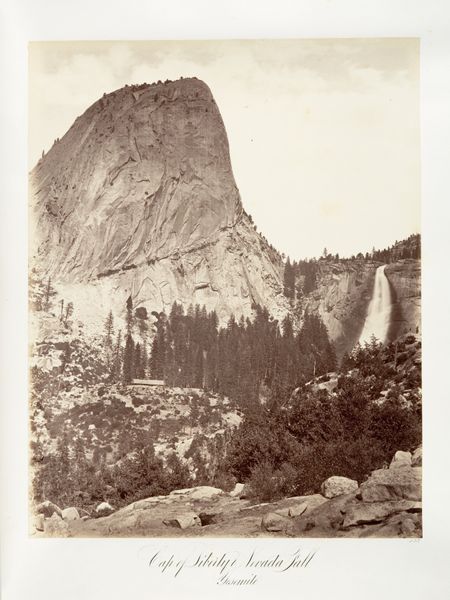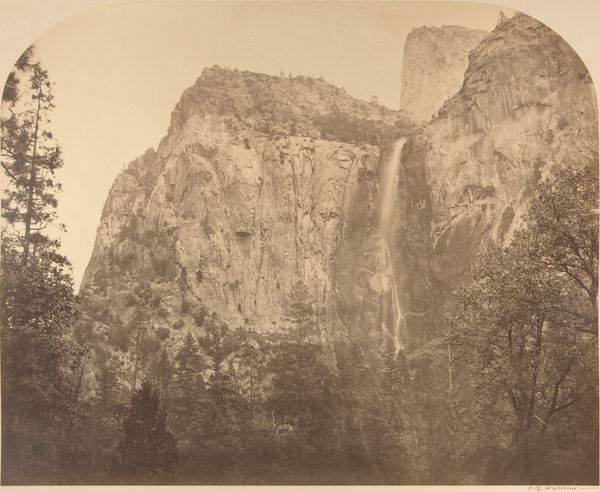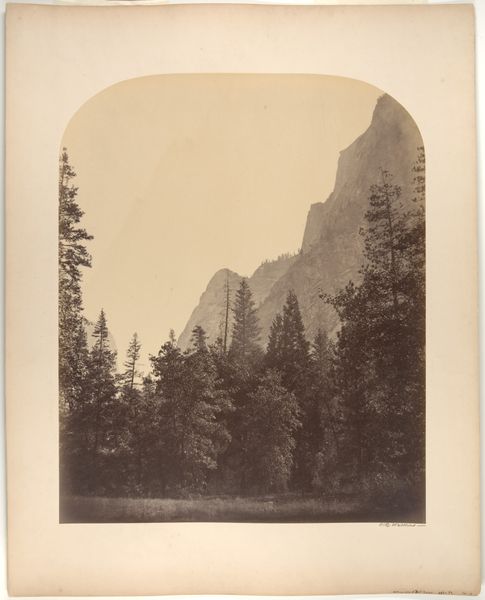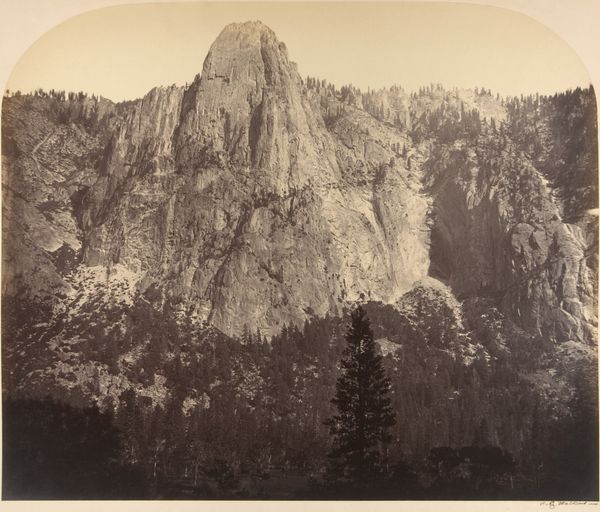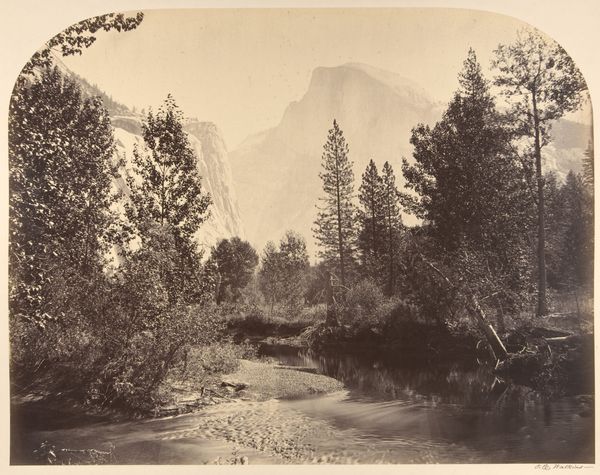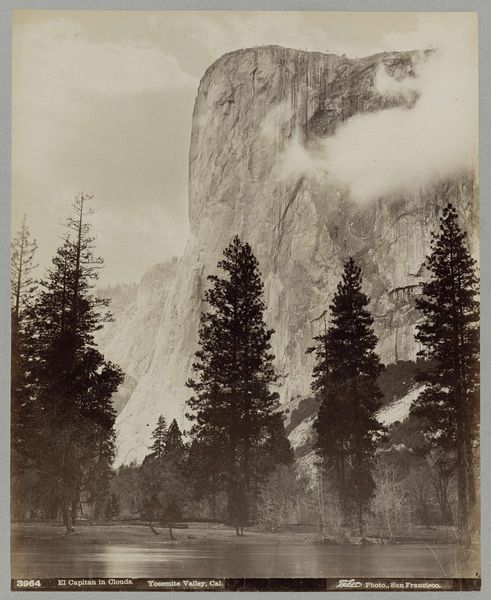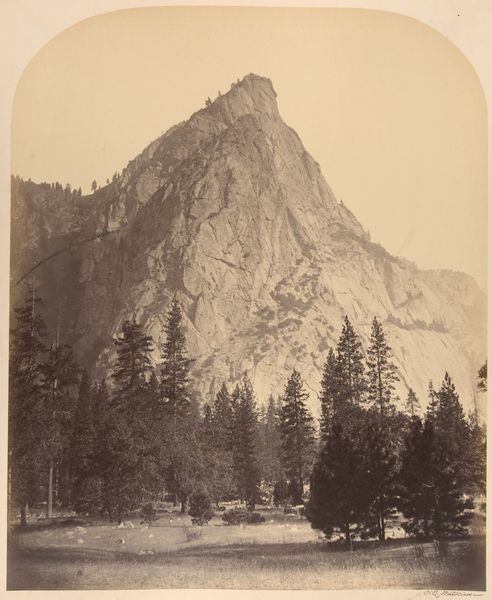
plein-air, photography, gelatin-silver-print, albumen-print
#
plein-air
#
landscape
#
photography
#
mountain
#
gelatin-silver-print
#
hudson-river-school
#
albumen-print
Dimensions: Image: 20 11/16 × 15 15/16 in. (52.6 × 40.5 cm) Mount: 23 15/16 × 18 15/16 in. (60.8 × 48.1 cm)
Copyright: Public Domain
Curator: Here we have Carleton Watkins’ "El Capitan, Yosemite," a landscape captured sometime between 1865 and 1866. Immediately, the sheer scale is so impressive. Editor: I find myself dwarfed, both literally and metaphorically, by the composition. That monolithic rock face dominates everything; the human scale seems completely irrelevant. It provokes a sublime anxiety, if I'm honest. Curator: Watkins used a mammoth-plate camera. Its large negatives yielded prints of incredible detail. But it was a time-consuming and physically demanding endeavor in this environment, lugging such equipment. Consider what "Yosemite" meant to those viewing the image. Think about westward expansion, the concept of the frontier, Manifest Destiny. These powerful natural landmarks became emblems. Editor: Yes, and notice how Watkins organizes the pictorial space: The reflected light on the Merced River pulls the eye forward, then upwards to those carefully arranged trees acting almost as repoussoir. All expertly calibrated to lead you inexorably to the immense, dominating presence of El Capitan itself. Curator: And within that "immense, dominating presence," there are symbols—power, resilience, the enduring spirit of the land before development, that resonated profoundly within the American consciousness. Watkins' landscapes encouraged viewers to perceive themselves within this narrative. El Capitan looms in that narrative like an inviolable presence, an indomitable testament. Editor: Absolutely. The tonality enhances this. That albumen print gives a range of warm sepia tones emphasizing depth and texture, imbuing the whole scene with an almost mythical quality. It is like an idealized rendering more than documentary truth. Curator: It makes me think about the mythology around Yosemite, the displacement of its indigenous populations. These images are undeniably beautiful, yet also complex cultural documents, ripe with the ideology of their time. They have played a central role in forming a kind of American self-image. Editor: An image deliberately constructed. It is like Watkins captured something raw and turned it into a refined and legible artifact. Curator: A refined artifact that speaks volumes, doesn't it? The resonance of these kinds of iconic images, and the conversations they still inspire... Editor: It forces us to see a constructed vision that can be just as telling as the subject in view.
Comments
No comments
Be the first to comment and join the conversation on the ultimate creative platform.
